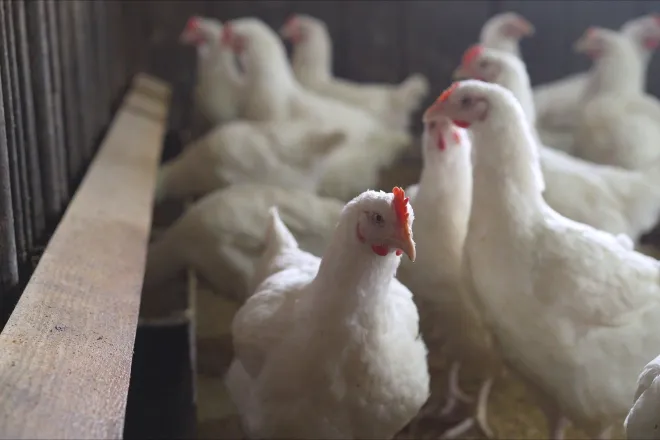
Ag stats: Colorado crop progress and condition summary – week ending April 12, 2020
Another mostly dry week depleted soil moisture supplies and raised concerns regarding moisture needs for the season ahead, according to according to the Mountain Region Field Office of the National Agricultural Statistics Service, USDA.
Statewide, winter wheat condition was rated 40 percent good to excellent, compared to 62 percent good to excellent last year.
In northeastern counties, scattered snow and rain was significant enough to delay fieldwork at week’s end. Some early reports of sugarbeets planted were received. County reports indicated winter wheat progress was slightly behind due to lack of consistent moisture. Irrigated crop producers noted dry soil moisture profiles were concerning. Livestock producers were providing supplemental feed due to lack of pasture growth thus far.
In east central counties, some areas received snow at week’s end and others received none. Reports noted summer pasture growth has been slow and livestock producers without adequate grass were having trouble meeting feeding needs. County reports noted winter wheat continued to be chiseled and crop condition was severely strained due to lack of moisture.
In the San Luis Valley, no moisture was received. According to the latest U.S. Drought Monitor report, counties in the area were moved into the severe drought category. Barley planting and other spring fieldwork continued. High winds and blowing topsoil were reported. Producers were reportedly pre-watering fields to aid crop emergence.
In southeastern counties, reports noted pasture and non-irrigated crop conditions continued to worsen without precipitation. Going forward, moisture is greatly needed to prevent losses in production. Reports noted a lot of the non-irrigated winter wheat has been chiseled and even watered to avert blowing fields.
As of April 10, 2020, snowpack in Colorado was 96 percent measured as percent of median snowfall. The Southwest and San Luis Valley were 87 percent and 83 percent, respectively.
Stored feed supplies were rated 1 percent very short, 10 percent short, 81 percent adequate, and 8 percent surplus.
Sheep death loss was 42 percent average and 58 percent light.
Cattle death loss was 65 percent average and 35 percent light.
CROP AND LIVESTOCK PROGRESS | ||||
Commodity | Current week | Previous week | Previous year | 5-year average |
(percent) | (percent) | (percent) | (percent) | |
Barley | ||||
Planted | 36 | 20 | 32 | 25 |
Onions | ||||
Planted | 10 | 3 | 8 | 24 |
Sugarbeets | ||||
Planted | 3 | -- | 11 | 12 |
Winter wheat | ||||
Pastured | 11 | 6 | 25 | 14 |
Jointed | 12 | 2 | 10 | 12 |
Cattle and calves | ||||
Cows calved | 81 | 73 | 76 | 76 |
Sheep and lambs | ||||
Ewes lambed | 81 | 71 | 83 | 69 |
DAYS SUITABLE FOR FIELDWORK AND SOIL MOISTURE CONDITION | ||||
Current week | Previous week | Previous year | 5-year average | |
Days suitable for fieldwork | 6.3 | 5.3 | 4.6 | 5.5 |
Topsoil moisture | (percent) | (percent) | (percent) | (percent) |
Very short | 17 | 14 | -- | 9 |
Short | 30 | 22 | 7 | 22 |
Adequate | 51 | 64 | 89 | 65 |
Surplus | 2 | -- | 4 | 4 |
Subsoil moisture | ||||
Very short | 13 | 7 | 1 | 11 |
Short | 22 | 20 | 18 | 27 |
Adequate | 65 | 73 | 79 | 60 |
Surplus | -- | -- | 2 | 2 |
CROP, LIVESTOCK, PASTURE AND RANGE CONDITION | ||||
Commodity | Current week | Previous week | Previous year | 5-year average |
(percent) | (percent) | (percent) | (percent) | |
Pasture and range | ||||
Very poor | 4 | 4 | 2 | 9 |
Poor | 11 | 9 | 9 | 21 |
Fair | 29 | 28 | 39 | 34 |
Good | 54 | 57 | 46 | 33 |
Excellent | 2 | 2 | 4 | 3 |
Winter wheat | ||||
Very poor | 14 | 12 | -- | 4 |
Poor | 18 | 15 | 4 | 12 |
Fair | 28 | 25 | 34 | 33 |
Good | 38 | 45 | 54 | 44 |
Excellent | 2 | 3 | 8 | 7 |
Livestock | ||||
Very poor | 1 | 1 | 1 | -- |
Poor | 4 | 4 | 4 | 2 |
Fair | 21 | 23 | 21 | 19 |
Good | 66 | 63 | 68 | 71 |
Excellent | 8 | 9 | 6 | 8 |













